Once you've tried a rotary cutter, you never go back. Rotary cutters can zip through several layers of fabric at once and, when combined with a metal or acrylic ruler, can also help you to speedily snip a batch of fabric with accurate measurements in minutes. This, in turn, saves you extra time for the sewing stage!
I remember the first time I used one – I'd made a couple of very basic quilts and found cutting my fabric units accurately was proving a challenge which was affecting the finished neatness of my quilt blocks. Seams were mismatched, my angles were a bit wonky and my old pair of fabric scissors were struggling to cut in a straight line.
Once I realised I'd caught the quilting bug I decided to treat myself to a rotary cutter and quilting ruler (I already had an old cutting mat which I'd been using for card making for years). I've never looked back.
SQUIRREL_PLAYLIST_10149049
Cutting fabric with a rotary cutter was transformative... genuinely so... and the part of quilt making where I lay out my fabrics and cut them to size has become one of my favourite parts of a new quilt project. Plus my quilt blocks have all the right angles now.
If you're a quilter like me, I implore you to treat yourself to the holy trinity of a rotary cutter, cutting mat and acrylic quilting ruler. You will not believe how much easier they make cutting small units to piece together into quilt blocks. Honestly, I know I sound slightly obsessed with rotary cutters but only because I actually am a bit.
On the odd days, my blade has become a bit blunter and is starting to struggle, I replace it with one of my spares and get quite a buzz from seeing my newly charged cutter whip through several layers of fabric with ease.
In this buyer's guide, we'll cover what is a rotary cutter, how to use one, the best rotary cutters to buy, and rotary cutting extras to consider. Give them a go I predict that, like me, you'll become an instant convert.
New to quilting? You might also like our guides to quilting for beginners and the best sewing machines for quilting.
What is a fabric rotary cutter?
A rotary cutter is a rotating razor blade with a handle and protective safety guard. When you run the cutter along fabric, the blade turns and cuts the fabric.
As well as cutting accurate strips and shapes, rotary cutters are also great to use for dressmaking. They make it easy to cut layers of fabric together – you just need to experiment with how many you can cut at once without losing accuracy.
Rotary cutters are also great for cutting slippery fabrics such as silk, velvet and knits, as you don’t need to lift them from the table to cut, but instead just hold them flat and cut through for neat edges.
Which size of rotary cutter do I need?
They come in a variety of sizes; the larger the blade size, the faster you can cut.
- 28mm blade this smaller blade ideal for pattern cutting in dressmaking, when cutting tight curves and small cuts.
- 45mm blade is the most common and for general usage
- 60mm blade is ideal for cutting strips and trimming fabric lengths. Larger cutters will cut thicker fabric and more layers in one go. Often used with cutting mats and rulers, they speed up cutting fabric for quilting and home sewing.
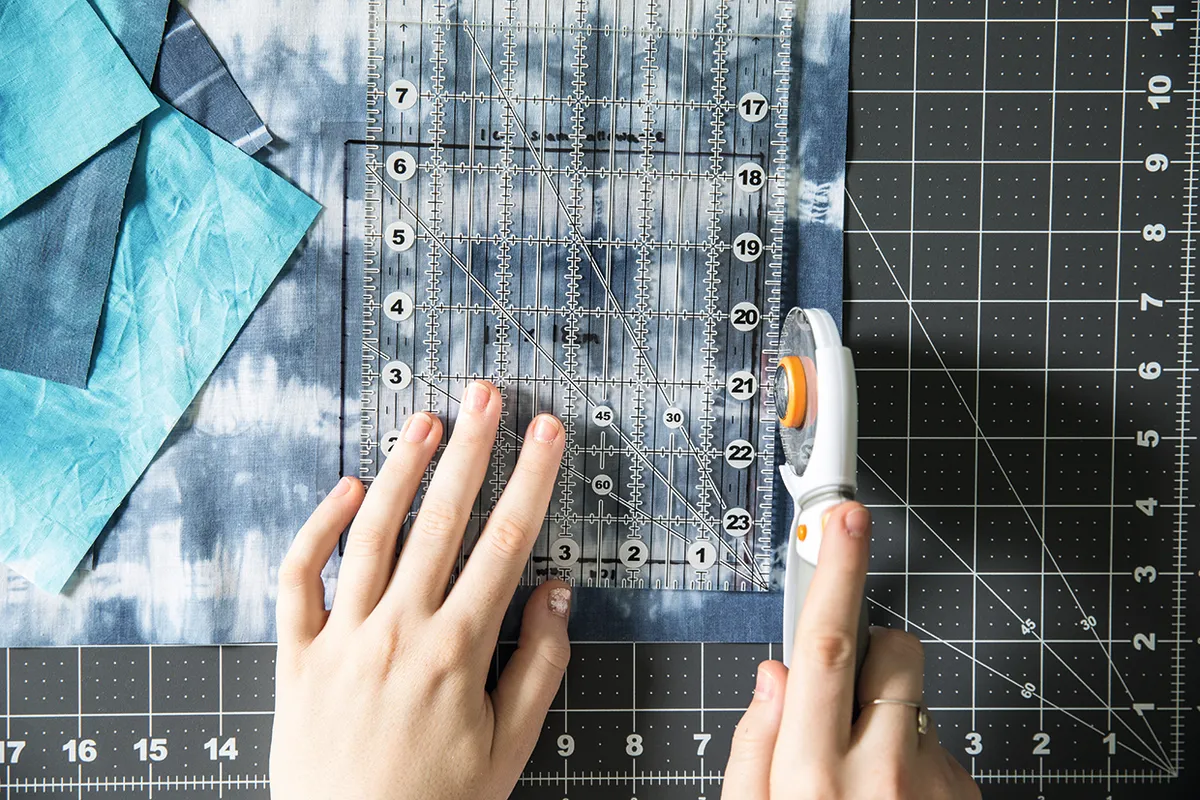
How to use a rotary cutter
Rotary cutters need to be used with a cutting matt beneath the fabric – so that as you move the cutter, it doesn't end up leaving a mark or cut on the table, carpet or surface you are resting on. Their blades are very sharp and cutting mats are easy to get hold of so start off by gathering your equipment!
It’s best to rest your mat on a hard surface like a table or tiled floor; if you have a spongy surface like a carpet beneath your cutting mat, it gives a little as you apply pressure, which then reduces the sharpness of the cut when you apply with the blade. Switching to a harder base surface has transformed my fabric cutting for many a quilt project in the past.
We find it easiest to stand up while you cut, as you can apply more even downwards pressure on the cutter.
Top tips
- Practise holding the cutter before you start – you may prefer to put your index finger on top, or wrap all your fingers around the handle. Keep your wrist straight and always cut away from you, as this is safer and you’ll get a neater cut.
- If you’re cutting with a ruler, hold it firmly in place with your other hand, making sure your fingers are all on the ruler and not hanging over the edge. Apply pressure to the cutter then push it alongside the ruler.
- The cutting blade is circular and extremely sharp so it will glide through the fabric easily. You will need to press firmly to cut through the fabric, but not too hard or it won’t go through smoothly and you may slip and hit the ruler, which can dull the blade and chip the edge.
- Once you’ve finished cutting, always lift the ruler rather than sliding it, then move it into the next position – never move the fabric or you’ll lose accuracy.
- Clean the dust and fabric lint from your blade regularly, and slide the guard back over the blade as soon as you’ve finished cutting before putting it down for safety.
- Cutting out curves
Best rotary cutters for fabric quilting and dressmaking
Last updated on 21/11/2024 to ensure all products are up-to-date and in stock
Olfa Deluxe 45mm Rotary Cutter
SQUIRREL_TEXT_13083969
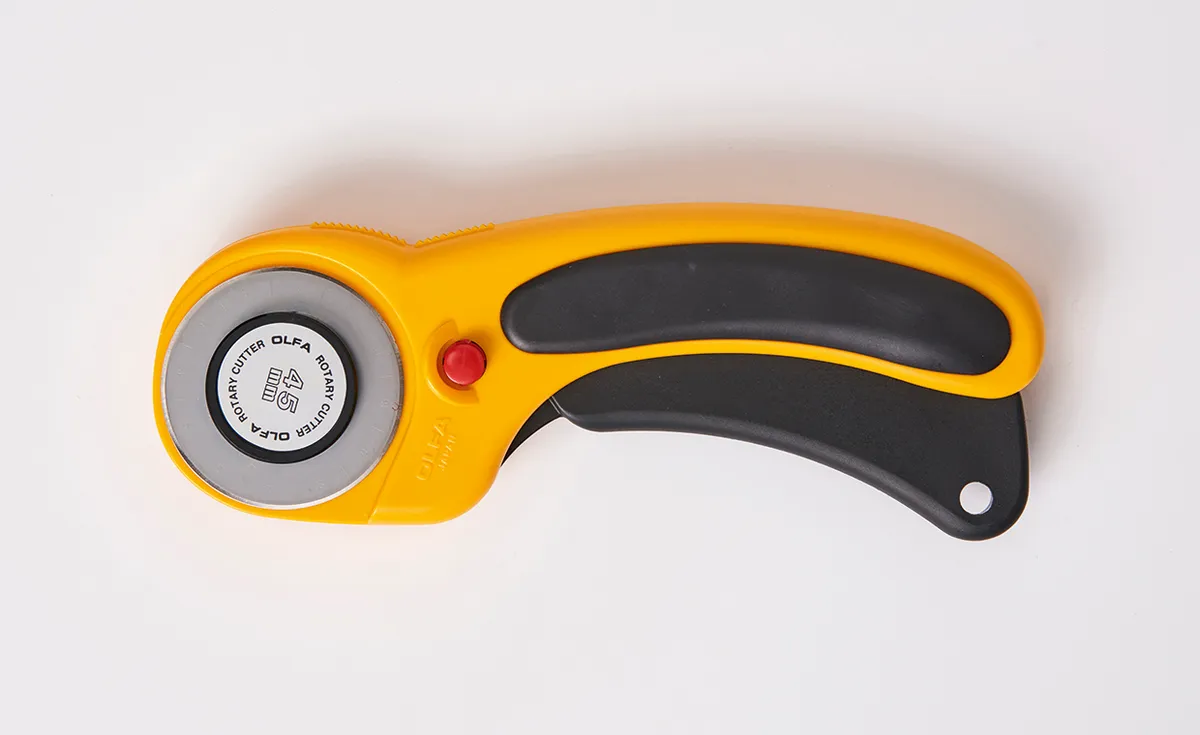
With its versatile 45mm blade and ergonomically designed handle, the Olfa Deluxe is a nifty cutter to start you off on your rotary cutting adventures.
Its main benefit over others in the market is its handle – created for comfort if you're cutting large batches of fabric – welcome to all those of us who know what a mission it is to cut hundreds of fabric pieces for a queen-size quilt project.
The cutter has been designed for both right and left-handed makers and, for a nice safety touch, the blade is designed to be automatically retracted – simply squeeze the handle as you cut to release it.
SQUIRREL_13083969
Fiskars Titanium 60mm Rotary Cutter
SQUIRREL_TEXT_13083970
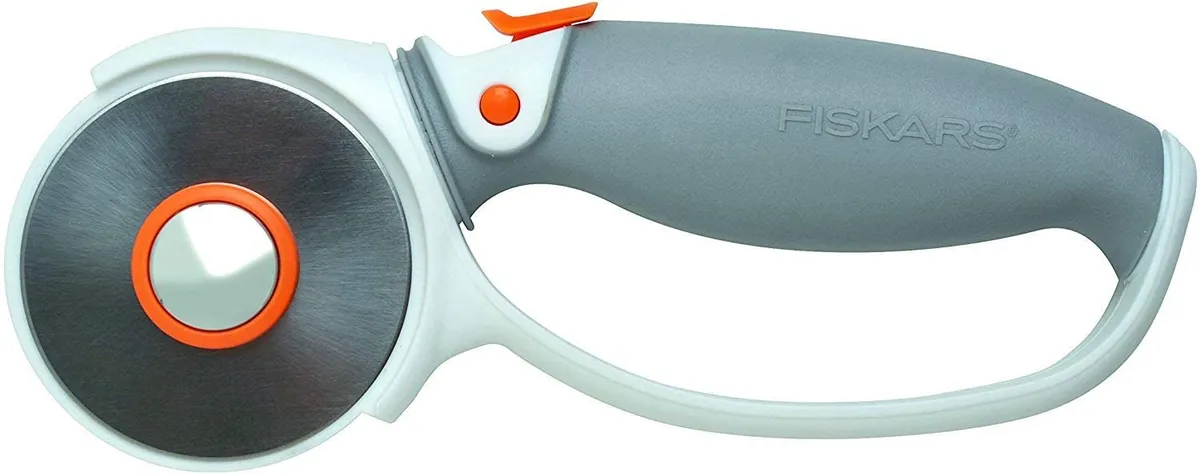
This nifty cutter makes light work of cutting through multiple layers with its titanium carbide-coated blades. It is a great choice if you're doing a lot of quilt making and patchwork.
It comes with a non-slip handle which is comfortable to hold and easy to control whether you're right or left-handed. Lock the blade with a knob to lock and unlock the blade, ideal for right and left-handed users. It comes with a 60 mm blade and you can pick up replacement blades easily when you need them.
SQUIRREL_13083970
Olfa 45mm Aqua Splash rotary cutter
SQUIRREL_TEXT_13083968
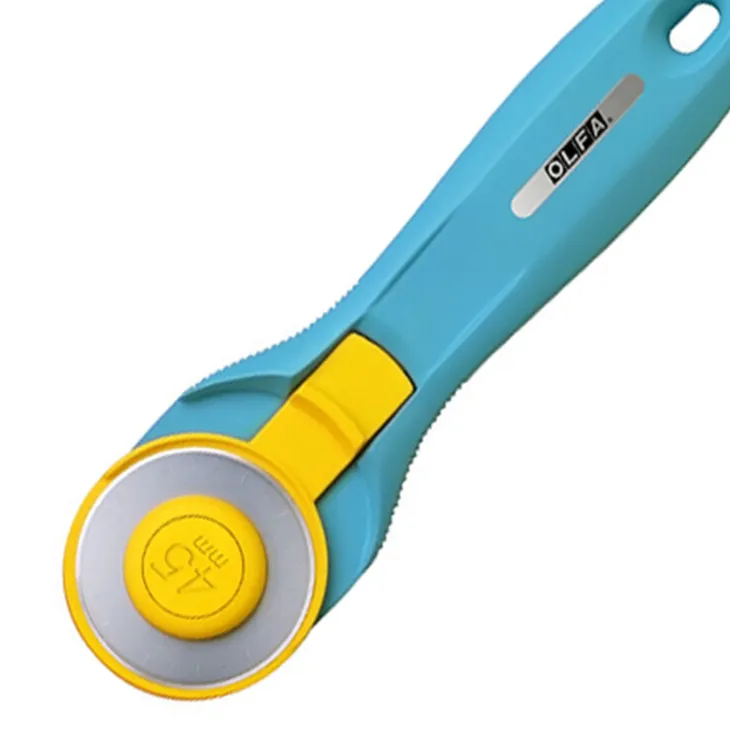
Olfa is a trusted name with quilt makers for a reason – their rotary cutters are sturdy and last for years. Experience precision with pizzazz!
Your creations aren't boring, and your rotary cutter shouldn't be either. This 45mm Splash cutter is the one for you if you like your craft stash pretty and practical. Its handle has been designed with tiny grooves just beyond the blade as a nifty safeguard to protect you if your fingers slip while cutting.
It's also got a super simple blade-changing mechanism which makes light work of switching to a fresh blade.
SQUIRREL_13083968
Omnigrid 45mm rotary cutter
SQUIRREL_TEXT_13083969

Another nifty 45mm cutter that will stand you in great stead for years of quilting and dressmaking – this Omnigrid yellow cutter includes a soft cushion grip handle and easy safety lock option to keep your blade out of harm's way when not in use.
SQUIRREL_13083969
Sew Easy 45mm rotary cutter
SQUIRREL_TEXT_13083952
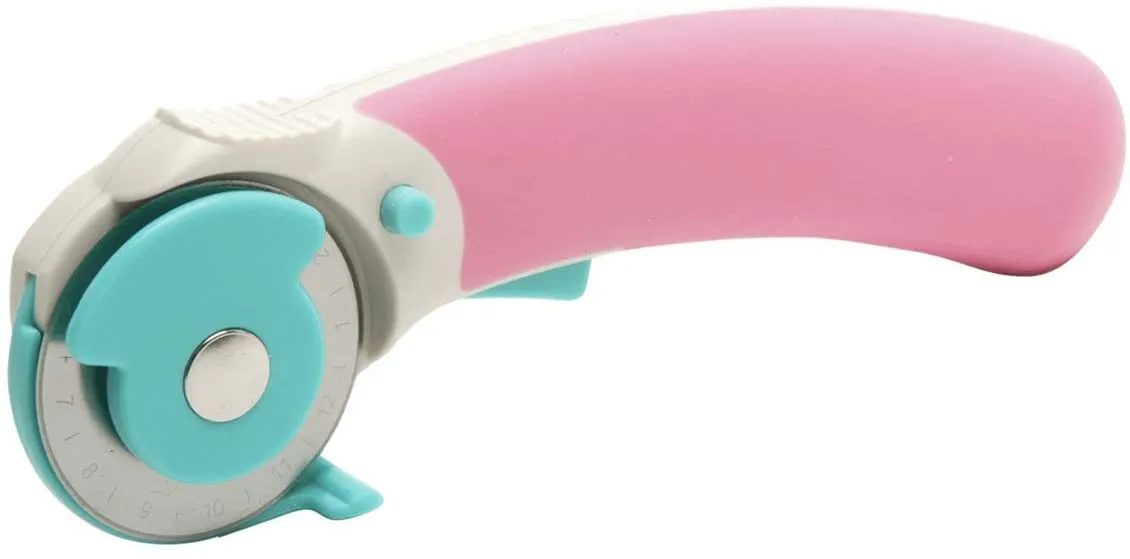
One of the prettiest cutters in this guide, we love the Sew Easy cutter for its ease of use and splash of colour that it brings to our cutting mat before we've even reached for our fabric.
It comes with a refill blade for when the time comes, and the blade is made with soft moulding tech to ensure a comfy grip for you while you cut. You can also pick up refill blades that are straight, pining, wave or skip effect.
SQUIRREL_13083952
Dafa 28mm Rotary Cutter
SQUIRREL_TEXT_13083950
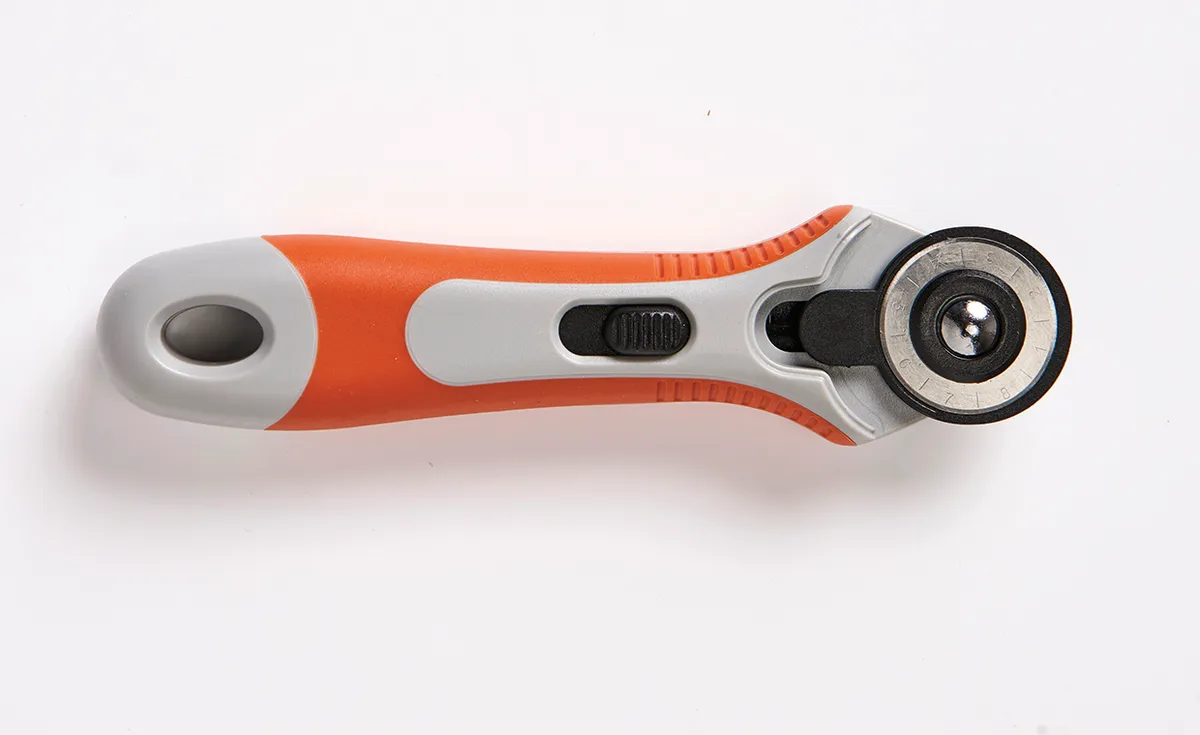
This nifty little 28mm cutter has all the essentials you need to become a trusted part of your sewing kit – cushion handle, safety function to shield the blade when out of action, plus it's suitable for left and right-handed crafters. This set comes with 2 replacement blades.
SQUIRREL_13083950
How to cut curves with a rotary cutter
If you're struggling to cut curves you're in luck! We have created a how to piece and sew curves guide here on Gathered.
Rotary cutting extras to consider
Cutting mats
SQUIRREL_TEXT_13105356
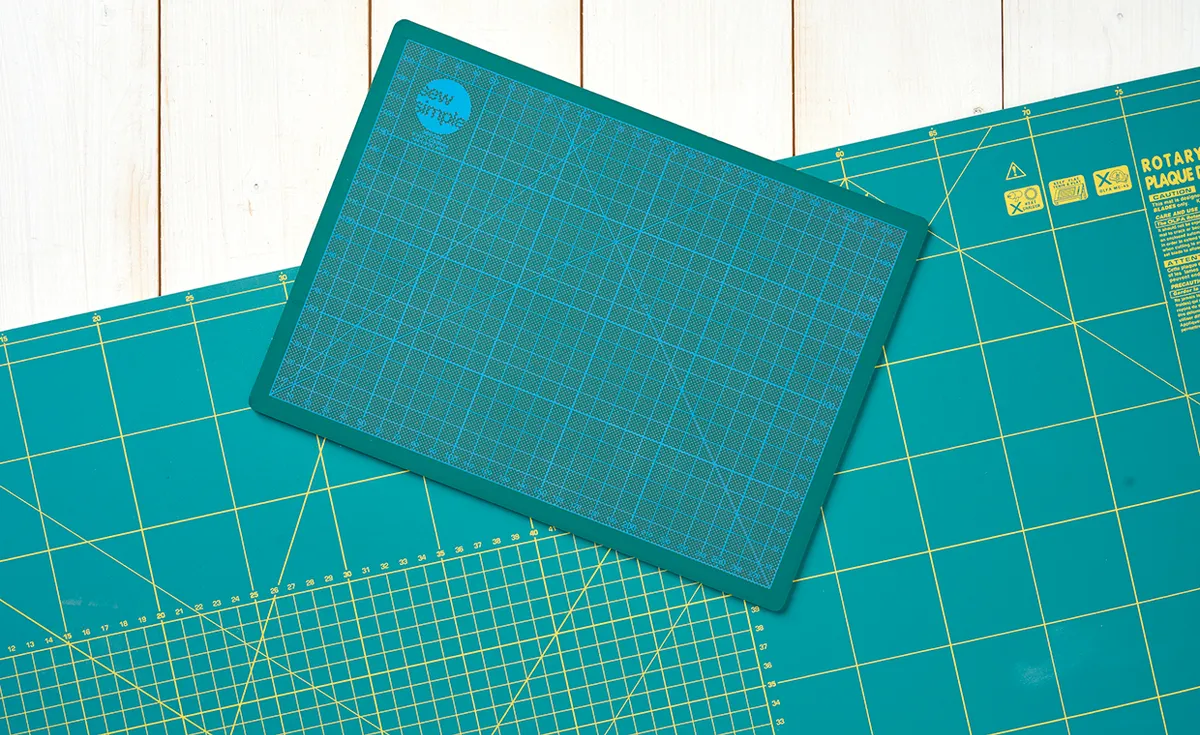
Cutting mats are made from a special material that ‘heals’ when you cut on it, although they do wear over time so try not to always cut on the same place on the mat. The mats come in a variety of sizes but it’s best to buy the largest one you can fit on your table.
Cutting mats will bend if they are rolled or stored on their edge and can’t be ironed on. Many mats have measurements printed on them in either metric or imperial or both, as well as different angles. Use these gridlines as a guide to keep the fabric straight, but use a ruler for measuring for really accurate pieces. Always press your fabric before you cut it out for greater accuracy.
SQUIRREL_13105356
Rulers
SQUIRREL_TEXT_13083959
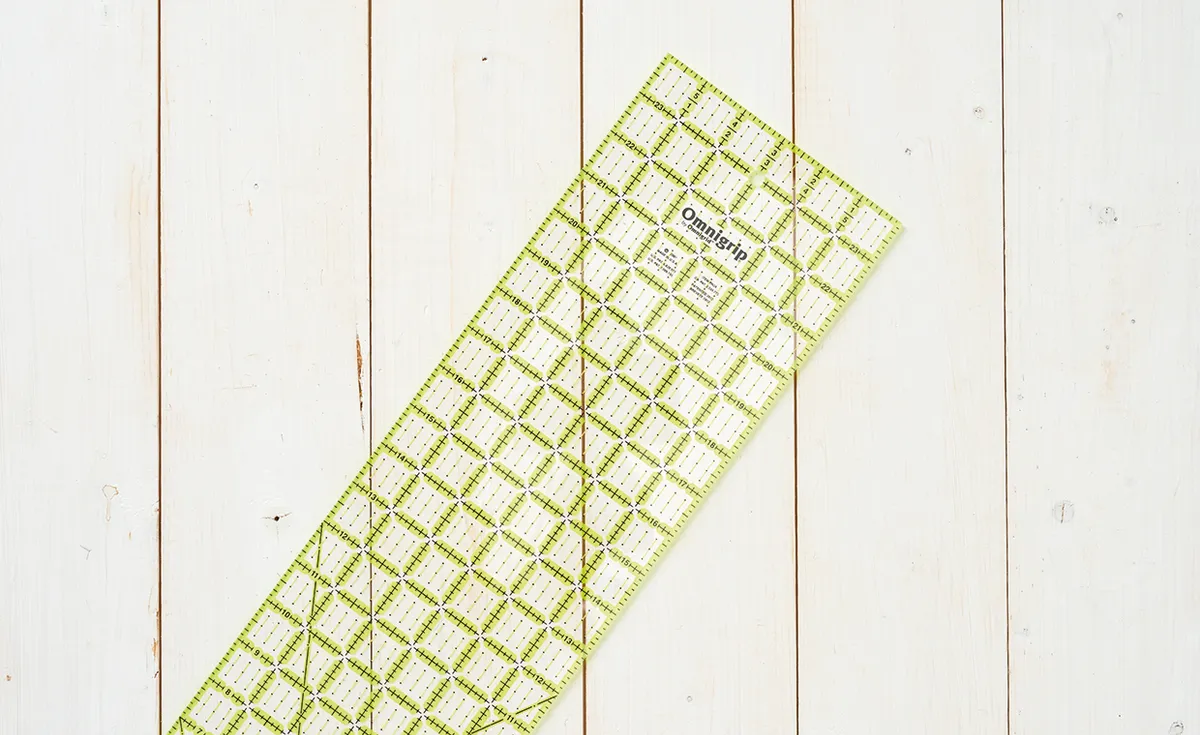
The special rulers you buy to use with rotary cutters have a non-slip surface and measurements printed on them. This special surface helps to keep the ruler still on the fabric when you’re cutting. You can buy them with the measurements and angles printed in either metric or imperial.
Simply line up the measurement you want to cut on the edge of your fabric then cut along the edge of the ruler for perfectly measured pieces. You can buy long rulers for trimming fabric or smaller square or shaped rulers for more specific uses.
Don’t use a normal ruler with a rotary cutter as it may slip out of place and it won’t be thick enough to prevent the rotary cutter from slipping and cutting your fingers.
To find out more, head to our guide to the best quilting rulers.
SQUIRREL_13083959
Replacement and special blades
SQUIRREL_TEXT_13105360
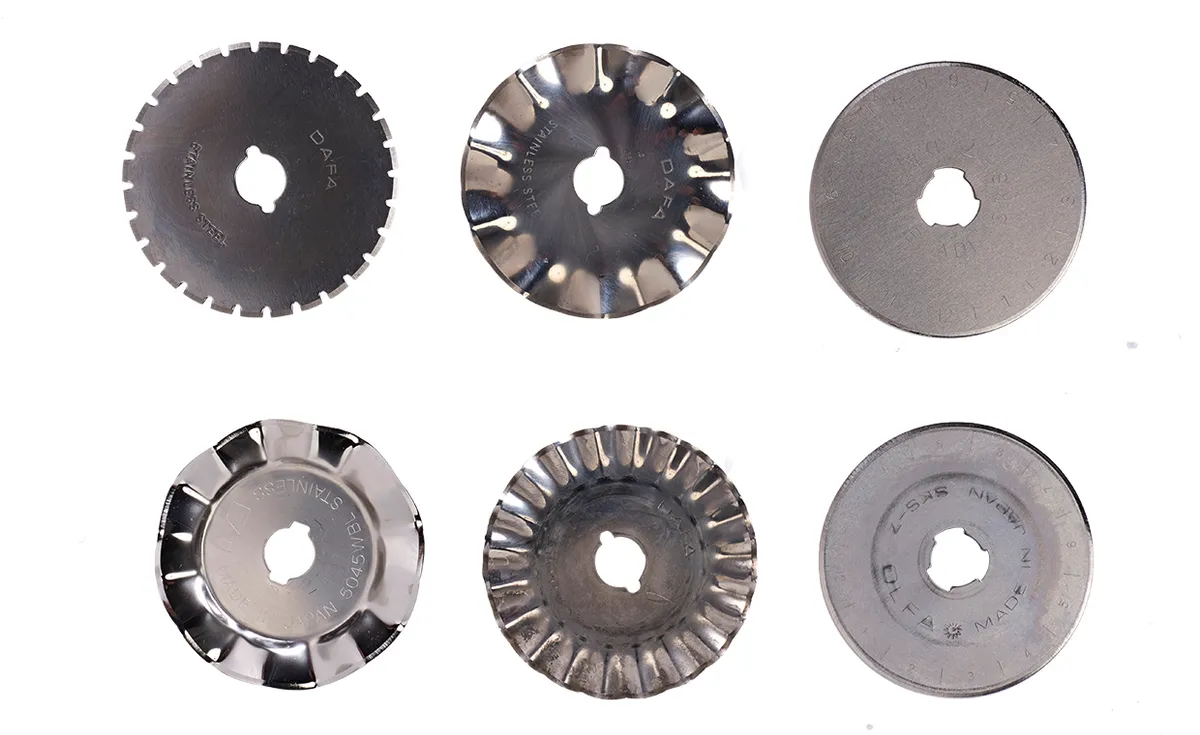
If your rotary cutter isn’t cutting evenly, your blade is probably dull and needs to be replaced. When a blade dulls, you’ll need to apply more pressure to cut cleanly through the fabric and this increases the risk of it slipping and cutting you.
Cutting over pins can dull the rotary blades very quickly, so only ever cut out fabric. If you want to cut paper or card, keep a specially labelled rotary cutter for just that!
You can also buy different blades which create different cutting effects. Pinking blades will give you pinked edges – perfect for trimming seam allowances to stop fraying. The wave or scalloped blades are great for finishing fleece fabrics and ideal for appliqué or small decorative details.
SQUIRREL_13105360
Choosing your rotary cutter
With so many options on the market, it can be tricky to decide which rotary cutter you need. Think about what type of fabric you will be using and how thick it is. This will determine the strength and type of blade you'll need.
For denser fabrics like canvas and denim, it's best to go with the Fiskars Titanium. If you work with lighter materials like chiffon, you can opt for the Omnigrid rotary cutter.
It's also important to consider how proficient you are at cutting fabrics. If you're new to the world of sewing and quilting pick a rotary cutter with safety locks.
Lastly, if you're left-handed ensure you pick your rotary cutter carefully. Many tools are designed for right-handed people. These will be extremely uncomfortable for lefties to use and could result in some serious repetitive strain! Make sure your cutter has been designed for both right and left-handed people like the Olfa Deluxe.
Use your new rotary cutter on fancy fabric
Now you have a rotary cutter you need some fabric to cut! Head over to our collection of online fabric shops to find yourself some stunning materials.

